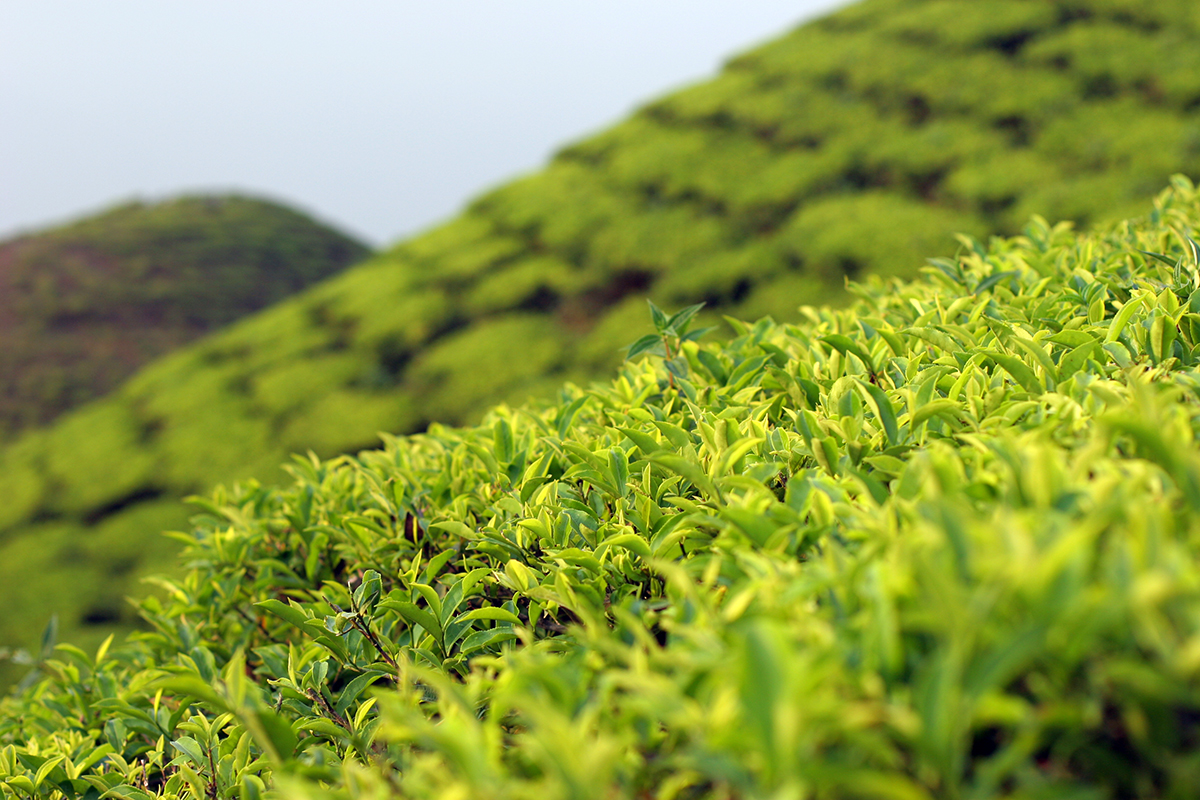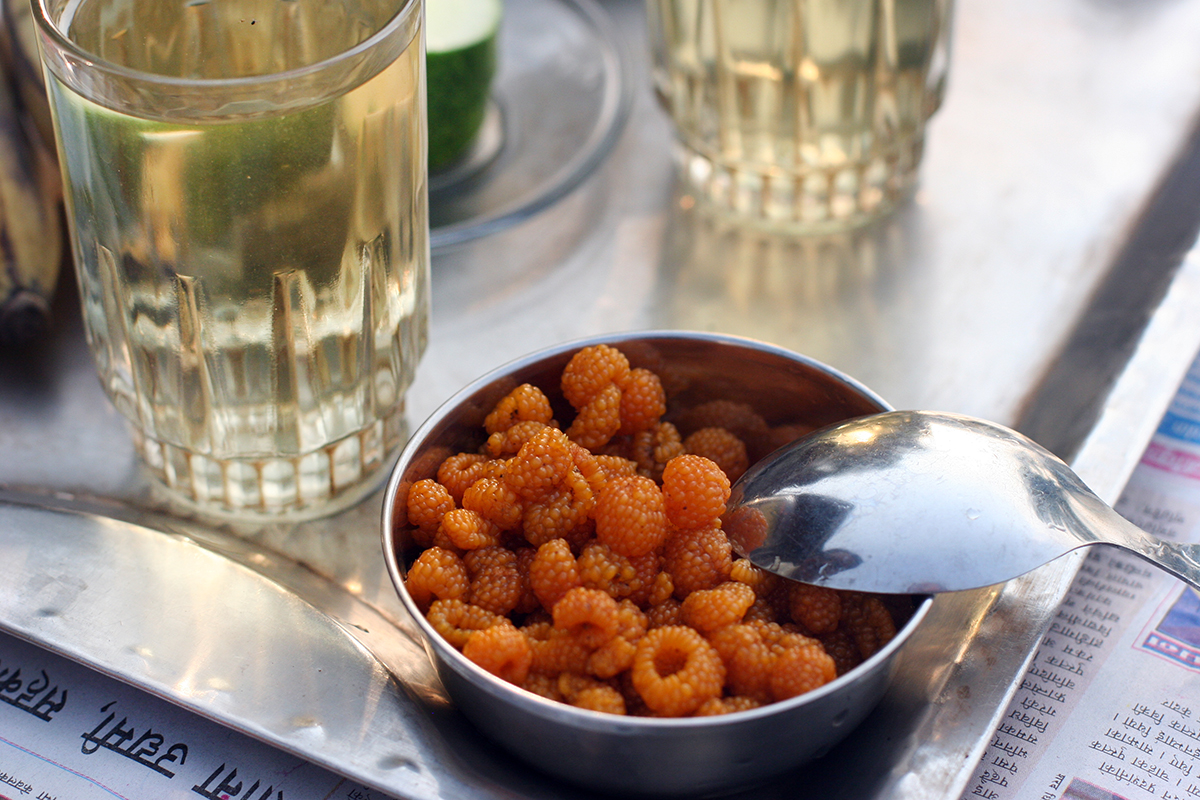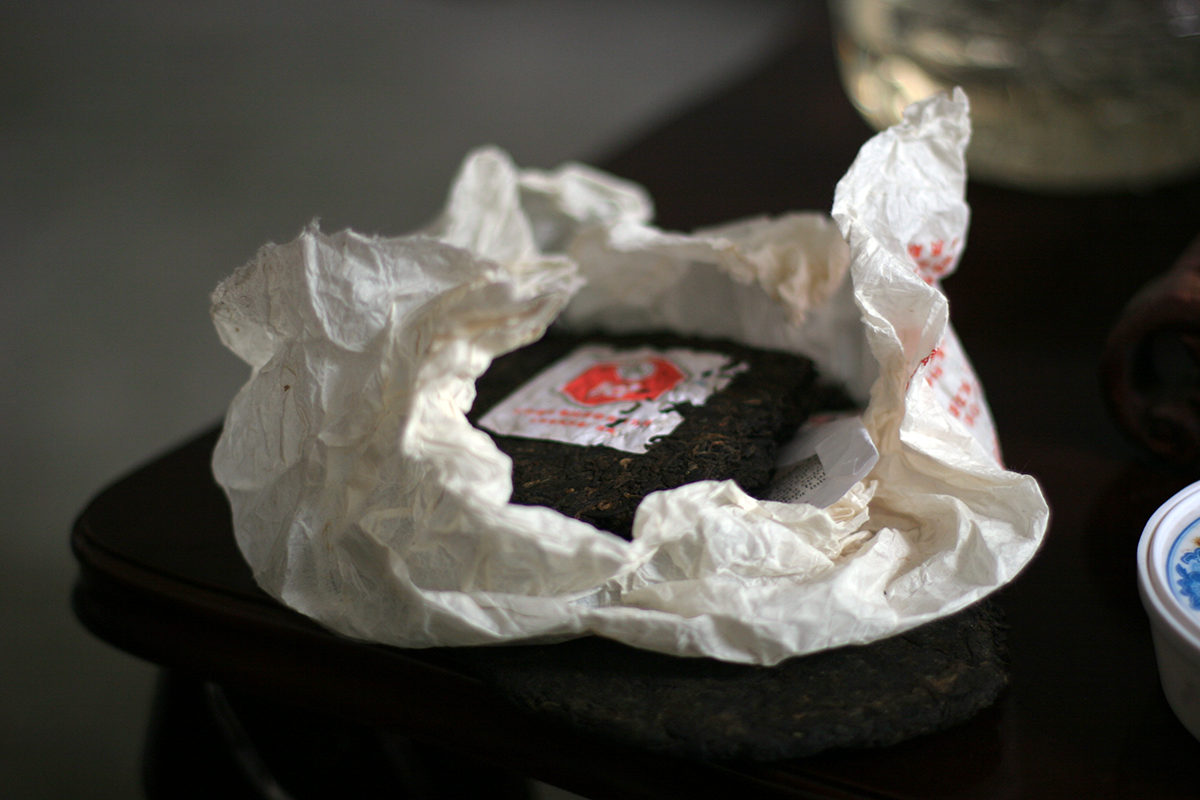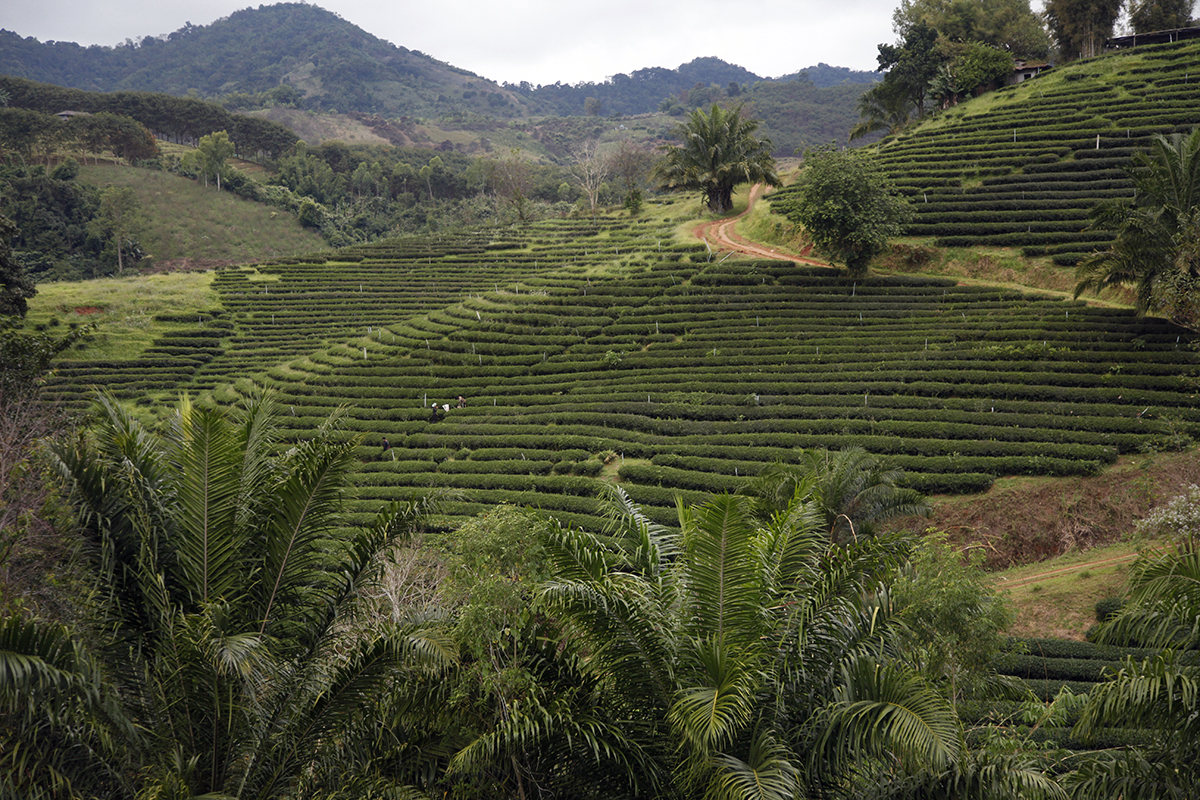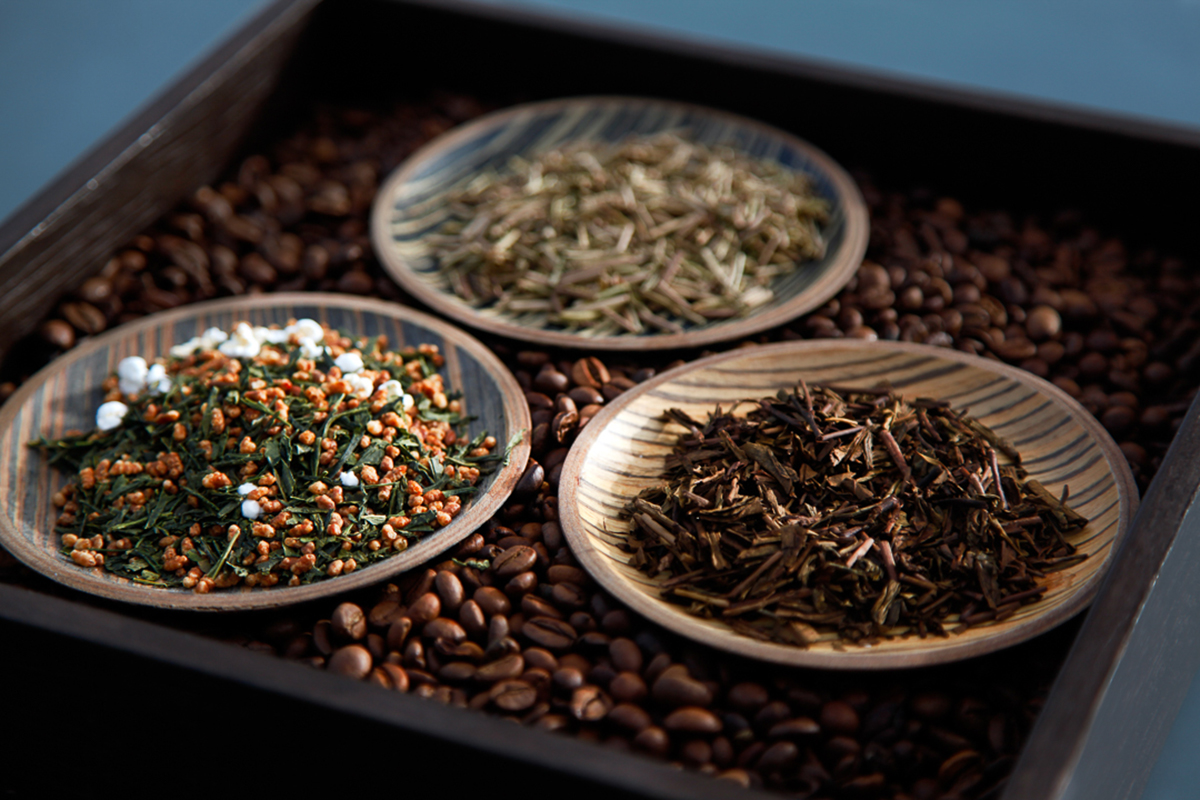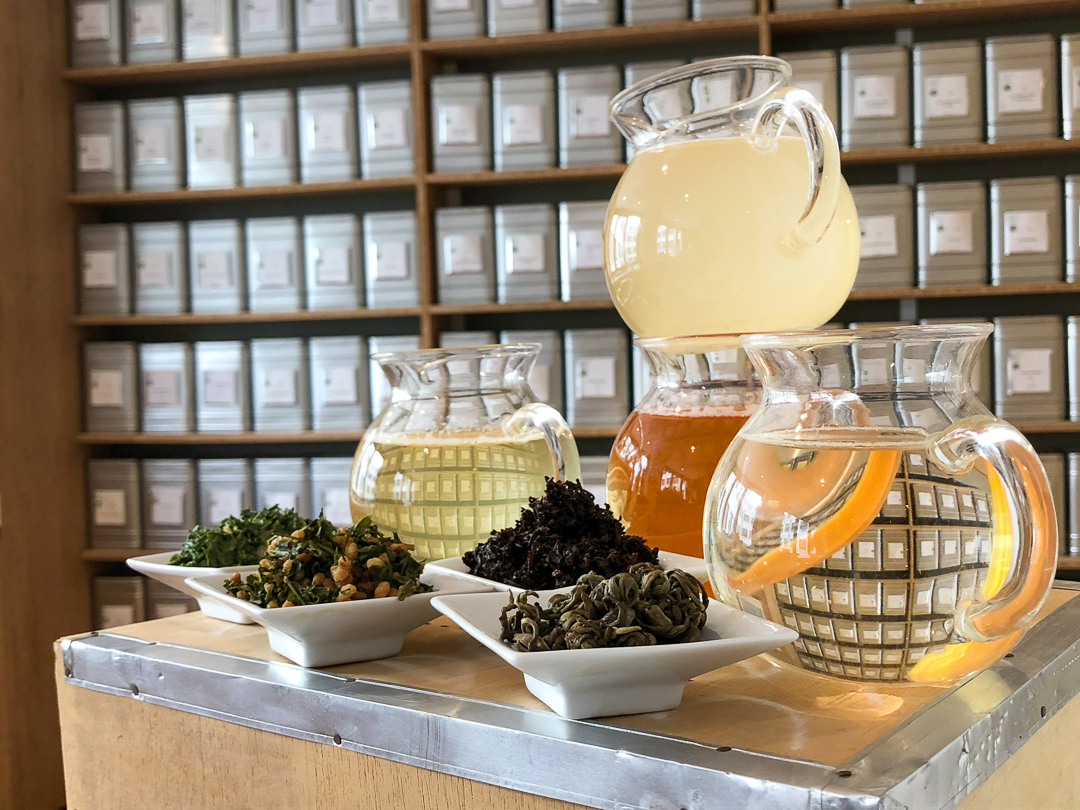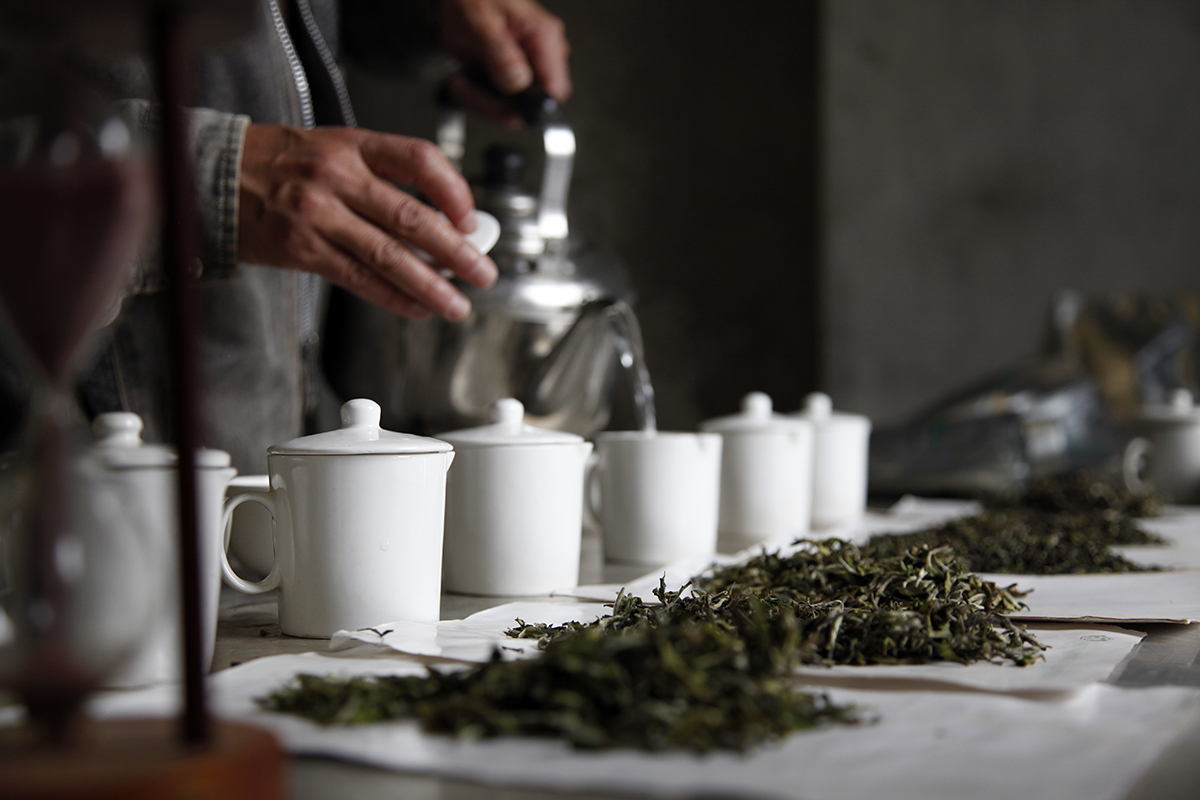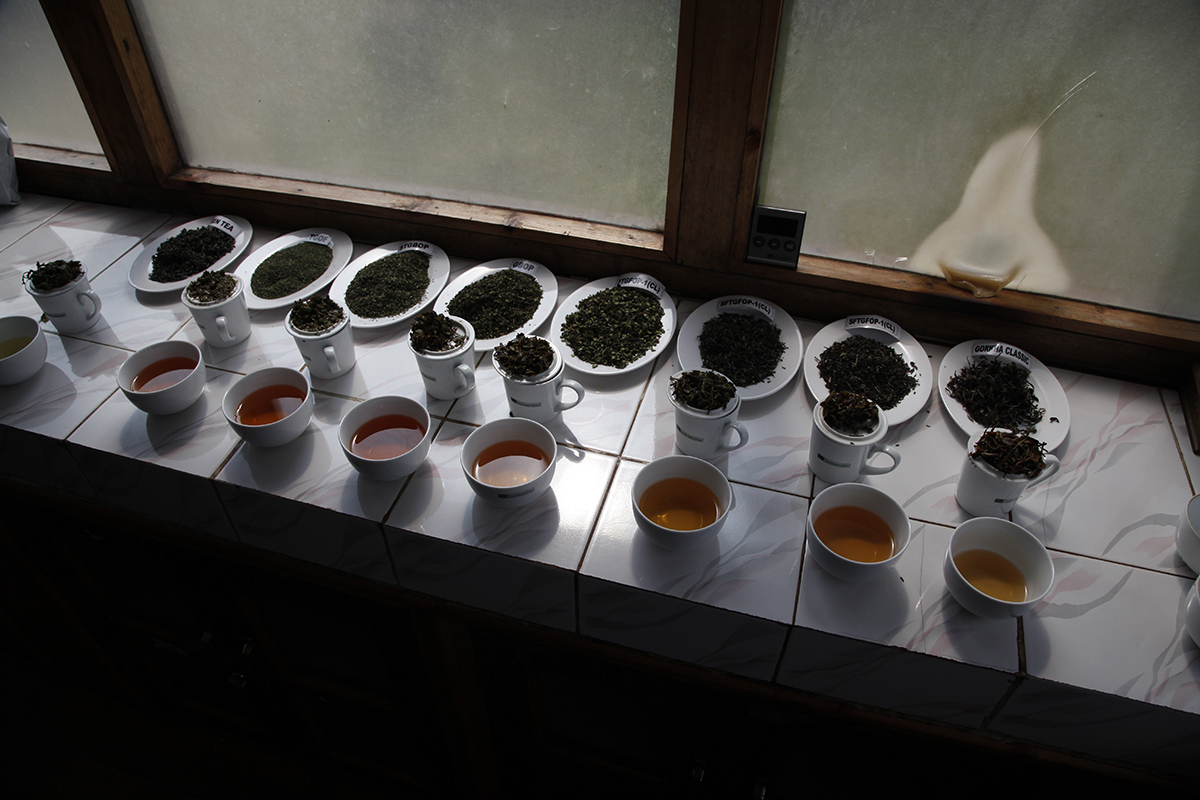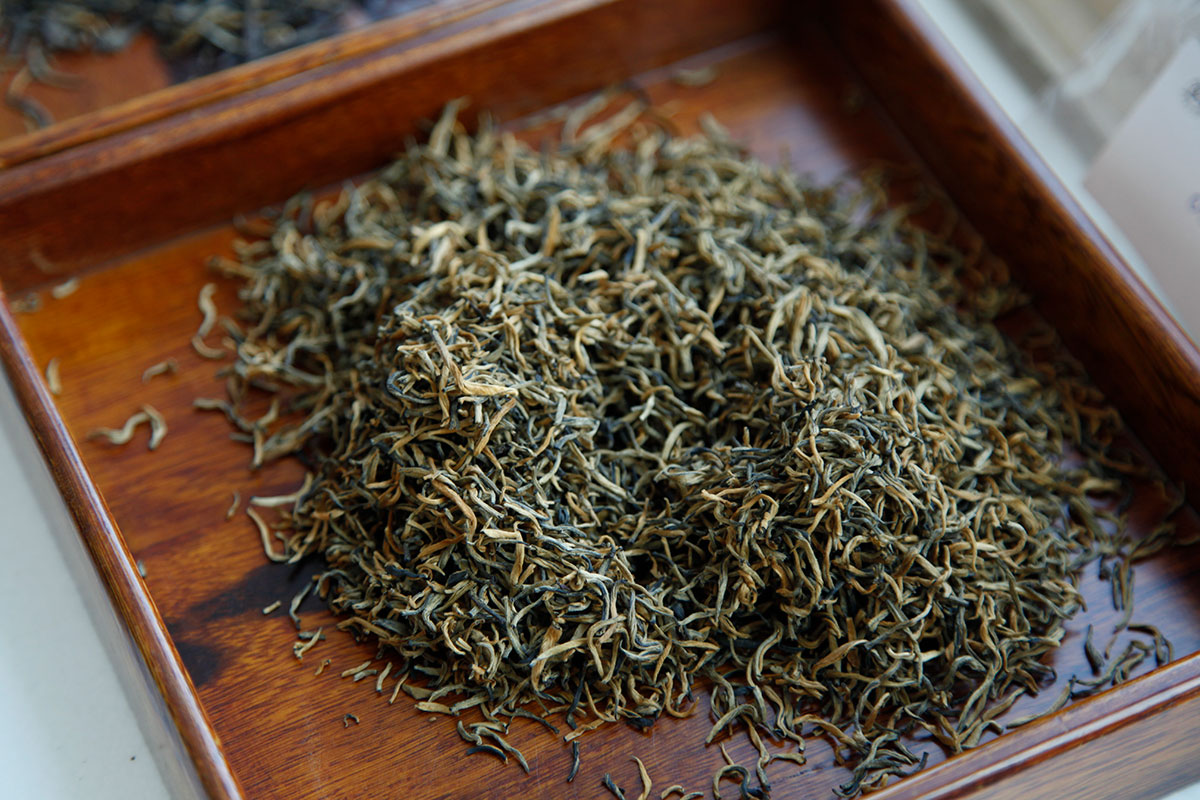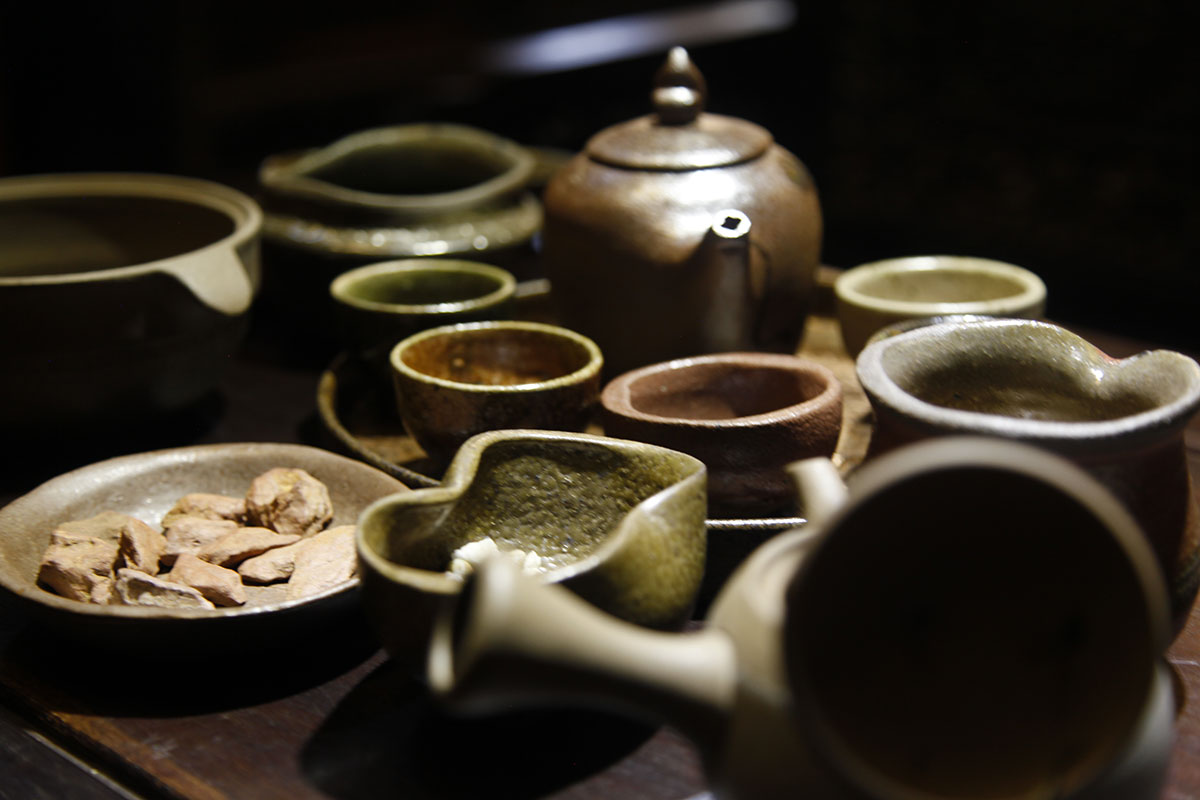During a recent interview, a journalist remarked that Palais des Thés had created two new professions, something I’d never really considered before. It’s quite unusual to create a new type of job; I don’t know if many companies have had this experience. At Palais des Thés we have two roles that didn’t exist before us: tea researcher and tea sommelier. There are now two tea researchers on our team and we get contacted by many applicants who want to join us. And thanks to our diploma programme, 26 people can now call themselves a tea sommelier, which is to tea what the sommelier is to wine.
Tea and food
Accompany your tea
Lots of things are used to accompany tea. In some countries people add mint, spices, milk or sugar to the teapot, or directly in the cup. There are many different customs. In other countries, people serve marbled quail eggs or seeds alongside their brew, or a cardamom pod, held in the mouth while drinking, like they do in Afghanistan. It gives the tea a delicate flavour. Here, in Ilam Valley in Nepal, these golden Himalayan raspberries add a touch of sweetness to the delicious green tea produced in the surrounding hills.
A walk in the woods
During lockdown, it can be easy to let ourselves go a bit. We might exercise less and put on weight. Could this be a good time to turn to tea? According to traditional Chinese medicine, one of the many properties attributed to our beloved Camellia sinensis is fat-burning. This remarkable quality is particularly true of dark teas, called Pu Erhs, with their powerful notes of undergrowth and humus. If you can’t take a walk in the woods, you can at least enjoy all the associated aromas in your cup – alongside those other supposed benefits.
Travelling in images
Travelling around the world is not one of life’s essentials, even when you have a job like mine. Despite the world health crisis, we’re receiving samples of tea produced on the other side of the world by farmers we know. We taste them straight away in our tasting room and choose the ones we want. In other words, the world of a tea researcher continues on its course even during these times of Covid-19. It’s a strange world though, one that has stopped us from moving around. So, when we grow nostalgic for travel, for those wonderful landscapes, those mountains and changing skies, there is nothing to stop us, after all, from transporting ourselves through the power of the image. Here, we’re in northern Thailand, not far from the Golden Triangle.
What tea should you serve a coffee-drinker?
At some point, I’m sure you’ve asked yourself what tea to serve an obsessive coffee drinker. Some people can’t envisage an alternative to their single-origin pour-over or flat white. From my experience in such situations, I suggest you offer teas with burnt notes (toasted or roasted). These aromas are foregrounded in three famous Japanese teas: Bancha Hojicha, Shiraore Kuki Hojicha and Genmaicha. All three are accessible and easy-drinking thanks to their roasted flavours. They are an ideal bridge between coffee and tea.
A sparkling idea
What does a tea researcher do when he can no longer travel? He spends more time tasting teas, and trying new experiences! For a long time I’ve wanted to try infusing tea in sparkling water, and now I’ve done it. One hour at room temperature; I used Perrier on this occasion. The result was rewarding: a very refreshing and delicious drink, once I’d got over the surprise. Healthy, and with no added sugar. It’s at least as good as any fizzy drinks I’ve tried, and can be kept for 24 hours in the fridge. From left to right: Yuzu Tea, Genmaicha, Chai Imperial and Perles de Jasmin.
Things are hotting up!
We hear a lot about carbon footprints, and when we consider tea, we immediately think of transport, whether by sea or air. Yet when you drink your cup of tea, do you know the biggest factor in its carbon footprint? It is the energy required for heating the water. The use of your kettle has a much greater impact than the transportation of a few leaves that barely weigh anything. So, when you’re preparing your cuppa, if you want to reduce your carbon footprint, make sure you only heat the amount of water you actually need, and switch off the kettle at the required temperature. This is much more efficient than boiling twice as much water, or heating it too much and then leaving it to cool.
To spit or to swallow
When you taste a large number of teas that are particularly tannic and astringent, you have to decide whether to swallow or not. In order to protect their palate, a taster will swill the liquor around in their mouth to analyse it, then spit it out. This allows them to remain neutral when assessing the next sample.
Choose loose-leaf!
If you’re someone who thinks about the health of our planet and you want to reduce your use of packaging, you might consider what benefit there is in using a tea bag instead of loose-leaf tea next time you’re brewing a cuppa. It’s true that when we’re on a flight or staying in a hotel it’s nice to have our favourite tea to hand, and it wouldn’t be convenient to carry around a canister.
But at home or at work, it’s so easy to use a teapot or a mug with an infuser. Tea bags are practical, of course. But it’s not difficult to measure out tea leaves: a pinch between three fingers is about right for a 10cl cup. Then pour over the hot water. So simple. And it does away with one, two or even three layers of packaging.
Teas to sip by the fire
Now the temperatures have dropped, we want to drink different types of teas from those we enjoyed in warmer weather. This season calls for rounder, fuller liquors; warm, woody notes; spicy and stewed fruit flavours. Here are some suggestions for teas to sip by the fire. Try a Jukro from South Korea for its cocoa notes, a Chinese Qimen Hong Cha Mao Feng for its leather notes, a Dianhong Jin Ya for its honey notes, a Dongyan Shan Tie Guan Yin from Taiwan for its stewed fruit notes, a Japanese Shiraore Kuki Hojicha for its toasted notes, and a Spirit of Smoke from Malawi for its smoky notes.

